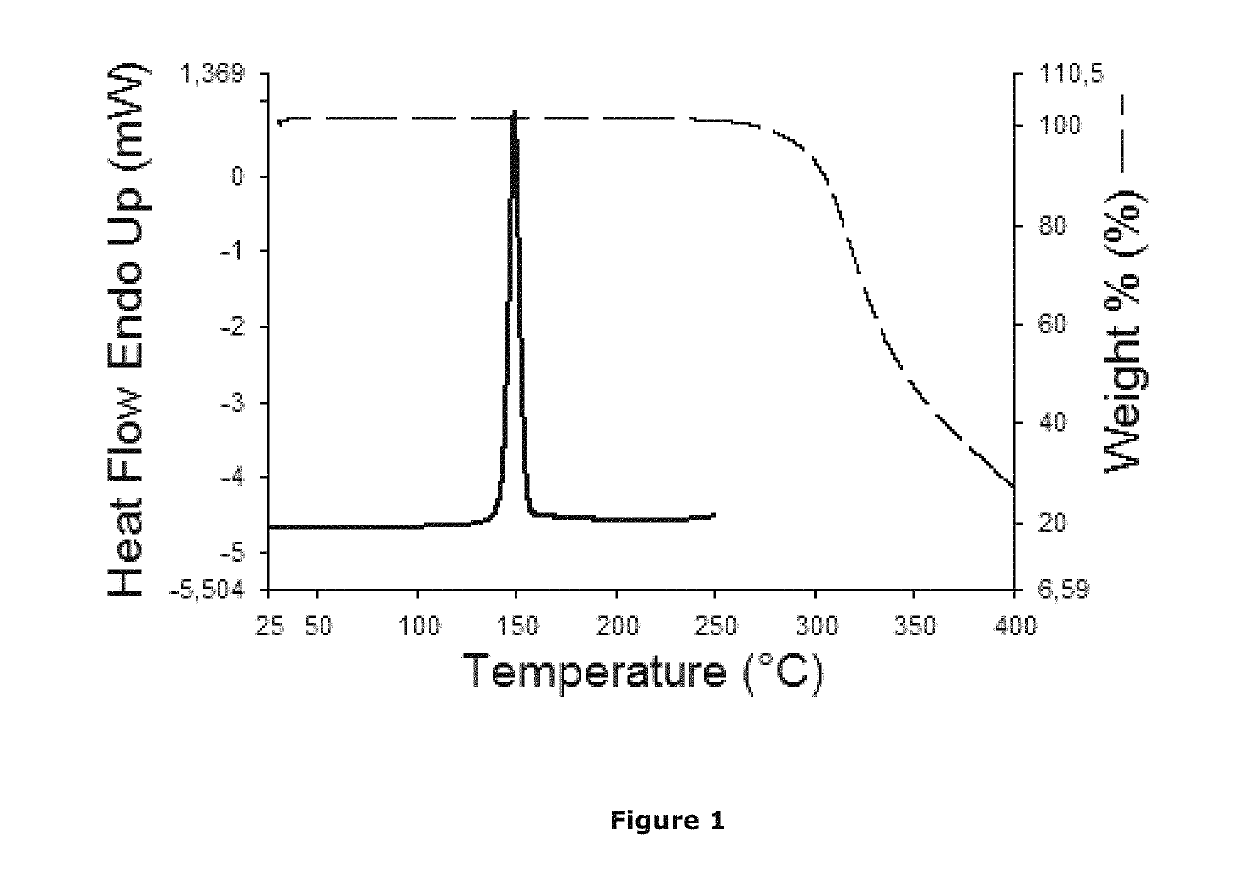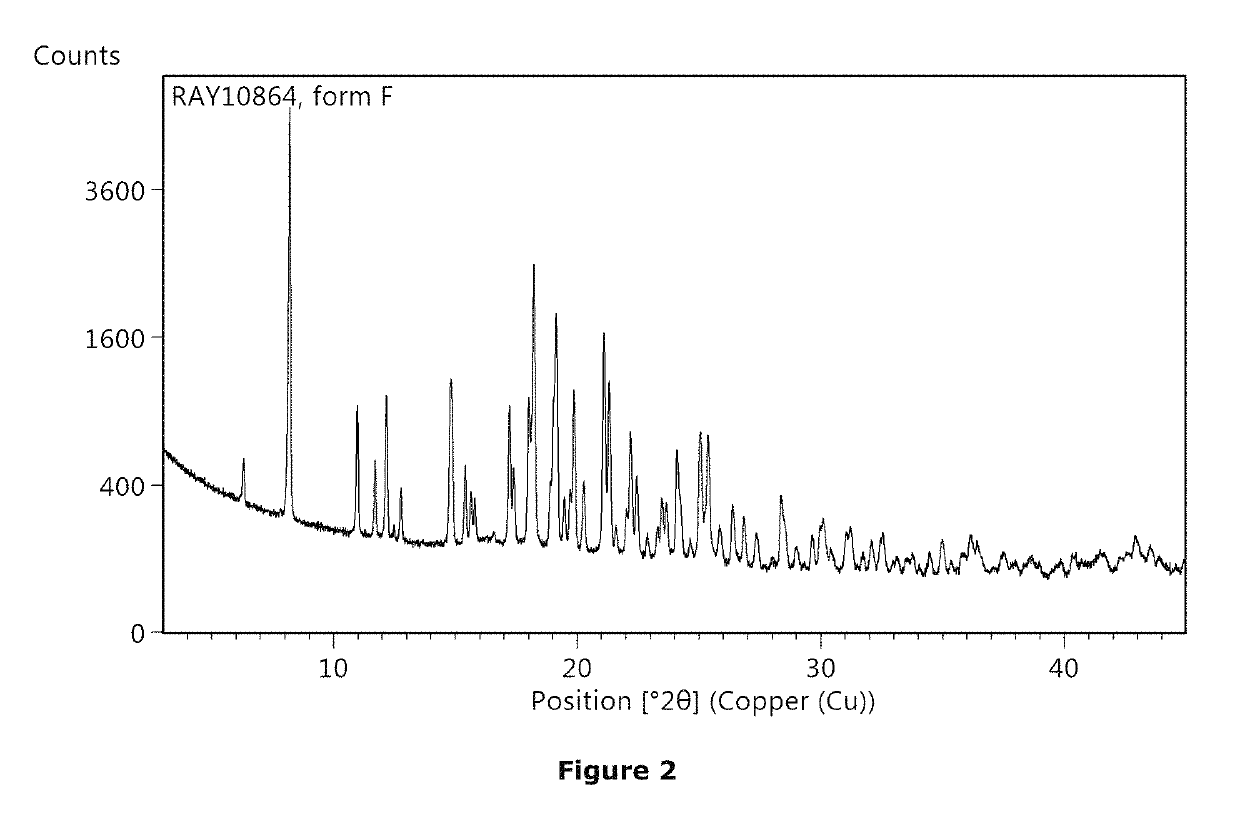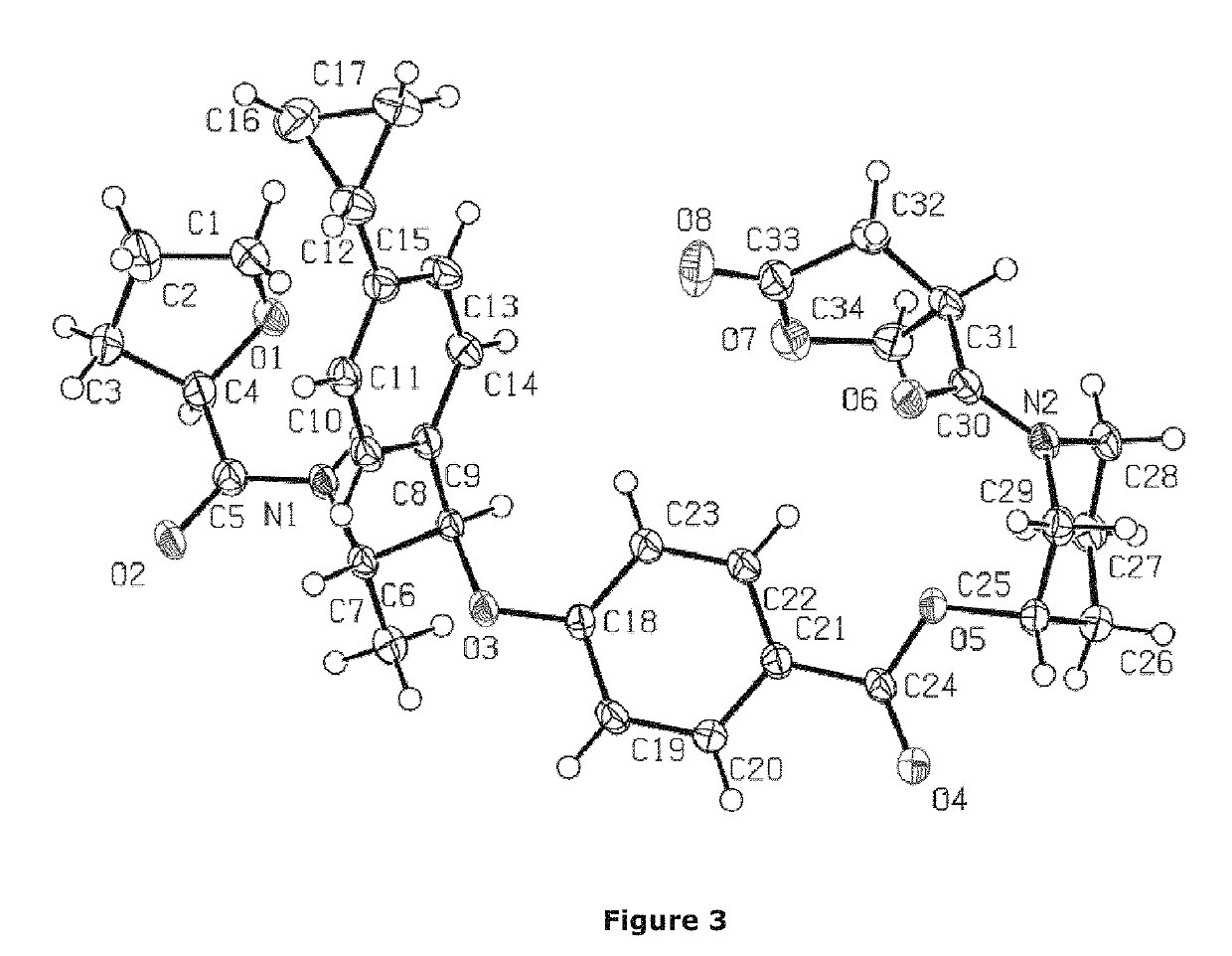Non-steroidal glucocorticoid receptor modulators for local drug delivery
a technology of glucocorticoids and receptors, applied in the field of non-steroidal compounds, can solve the problems of limited use of glucocorticoids, impaired wound healing, and treatment can induce systemic adverse effects, and achieve the effects of reducing side effects, reducing side effects, and improving drug safety
- Summary
- Abstract
- Description
- Claims
- Application Information
AI Technical Summary
Benefits of technology
Problems solved by technology
Method used
Image
Examples
example 1
-[(3R)-5-oxotetrahydrofuran-3-carbonyl]-3-piperidyl]-5-[(1R,2S)-1-(p-tolyl)-2-[(2,2,2-trifluoroacetyl)amino]propoxy]pyridine-2-carboxamide (Compound 1)
[0541]
[0542]2M Oxalyl chloride (40 mL, 80 mmol) in dichloromethane was added to a solution of the lactone from Preparation 33 (1.9 g, 14.6 mmol) in dichloromethane (80 mL) followed by catalytic DMF (0.02 mL). The reaction mixture was stirred at room temperature for 1 hr and then evaporated under reduced pressure to give a yellow gum. This gum was dissolved in toluene (50 mL) and evaporated under reduced pressure, process repeated to remove the excess oxalyl chloride. The resulting acid chloride was dissolved in dichloromethane (20 mL) and added to a solution of the amine from Preparation 16 (5.52 g, 11.9 mmol) and 4-methylmorpholine (3 mL, 27.3 mmol) in dichloromethane (150 mL) at 5° C. The reaction was stirred at 5° C. for 0.5 hr and then evaporated under reduced pressure. The residue was dissolved in dichloromethane and purified by ...
example 2
)-1-(4-cyclopropylphenyl)-2-[(2,2,2-trifluoroacetyl)amino]propoxy]-N-[(3S)-1-[(3R)-5-oxotetrahydrofuran-3-carbonyl]-3-piperidyl]pyridine-2-carboxamide (Compound 2)
[0547]
[0548]Trifluoroacetic acid (4 mL) was added to a solution of the carbamate from Preparation 25 (0.752 g, 1.275 mmol) in acetonitrile (4 mL) and the resulting solution stirred at room temperature for 0.2 hr. The reaction mixture was evaporated under reduced pressure. The resulting residue was dissolved in 2M acetic acid in methanol and purified by ion exchange chromatography (10 g SCX cartridge) eluting with 100% methanol followed by 2M ammonia in methanol. The ammonical methanol eluent was evaporated under reduced pressure to give the crude amine intermediate (5-[(1R,2S)-1-(4-cyclopropylphenyl)-2-[(2,2,2-trifluoroacetyl)amino]propoxy]-N-[(3S)-3-piperidyl]pyridine-2-carboxamide). This crude amine intermediate was dissolved in N,N-dimethylformamide (30 mL) along with the acid from preparation 33 (0.248 g, 1.9 mmol) and...
example 3
)-1-(4-cyclopropylphenyl)-2-(2,2-difluoropropanoylamino)propoxy]-N-[(3S)-1-[(3R)-5-oxotetrahydrofuran-3-carbonyl]-3-piperidyl]pyridine-2-carboxamide (Compound 3)
[0552]
[0553]Aqueous lithium hydroxide solution (1M, 2 mL, 2 mmol) was added to a solution of the compound from Example 2 (100 mg, 0.166 mmol) and the resulting solution heated to 70° C. for 1.5 hr. The reaction mixture was evaporated under reduced pressure and the resulting residue suspended in toluene (2×50 mL) and evaporated to remove any residual water to give the deprotected ring opened intermediate. This intermediate (0.018 mmol), 2,2-difluoropropanoic acid (3 mg, 0.027 mmol) and N,N,N′,N′-tetramethyl-O-(1H-benzotriazol-1-yl)uronium hexafluorophosphate (17 mg, 0.045 mmol) were dissolved in N,N-dimethylformamide (0.5 mL) and finally diisopropylethylamine (0.013 mL, 0.072 mmol) added. The resulting mixture was heated to 40° C. for and then purified by preparative reverse phase hplc using a gradient of acetonitrile in 0.1%...
PUM
| Property | Measurement | Unit |
|---|---|---|
| temperature | aaaaa | aaaaa |
| 2θ | aaaaa | aaaaa |
| 2θ | aaaaa | aaaaa |
Abstract
Description
Claims
Application Information
 Login to View More
Login to View More - R&D
- Intellectual Property
- Life Sciences
- Materials
- Tech Scout
- Unparalleled Data Quality
- Higher Quality Content
- 60% Fewer Hallucinations
Browse by: Latest US Patents, China's latest patents, Technical Efficacy Thesaurus, Application Domain, Technology Topic, Popular Technical Reports.
© 2025 PatSnap. All rights reserved.Legal|Privacy policy|Modern Slavery Act Transparency Statement|Sitemap|About US| Contact US: help@patsnap.com



